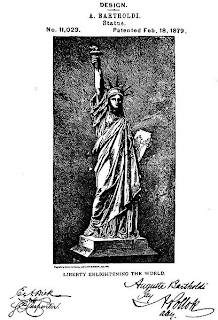On Oct. 28, 1886, President Grover Cleveland dedicated the Statue of Liberty, a gift from France, in New York Harbor. In that day’s edition, The New York Times described the building excitement for the ceremony: “All day yesterday people came to the city in droves to participate in to-day’s celebration. Extra heavily loaded trains, much behind schedule time, were the rule on every railroad entering the city. Every hotel was crowded to its utmost capacity last night, and there was hardly one of the better known hotels which did not have to turn away hundreds of would be guests.”
The ceremony included speeches by the president and famed French engineer Ferdinand de Lesseps, among others, as well as music and gun salvo. The finale? The statue’s designer, Frederic-Auguste Bartholdi, who was perched in the statue’s torch, pulled a rope removing a large French flag from the front of the statue, revealing Lady Liberty’s face to the crowd.
The statue was the brainchild of the French historian Edouard de Laboulaye, who proposed it in 1865. Bartholdi designed the statue and got help with its construction from Eugene-Emmanuel Viollet-le-Duc and Alexandre-Gustave Eiffel, architect of the Eiffel Tower. Shipped to New York in pieces, the statue had to be reconstructed on nearby Bedloe’s Island (now Liberty Island) in New York Harbor.
The statue stands 151 feet high (on top of a 154-foot-high pedestal) and depicts Lady Liberty raising a torch in her right hand and holding in her left hand a tablet inscribed with the date of the publication of the Declaration of Independence, July 4, 1776.
For more see the full New York Times story.






No comments:
Post a Comment